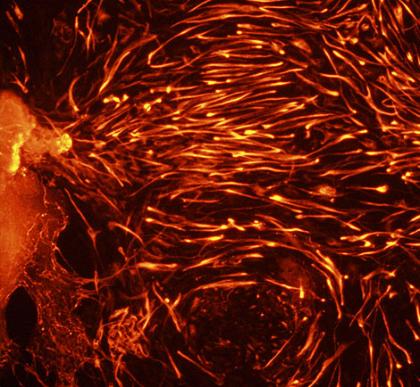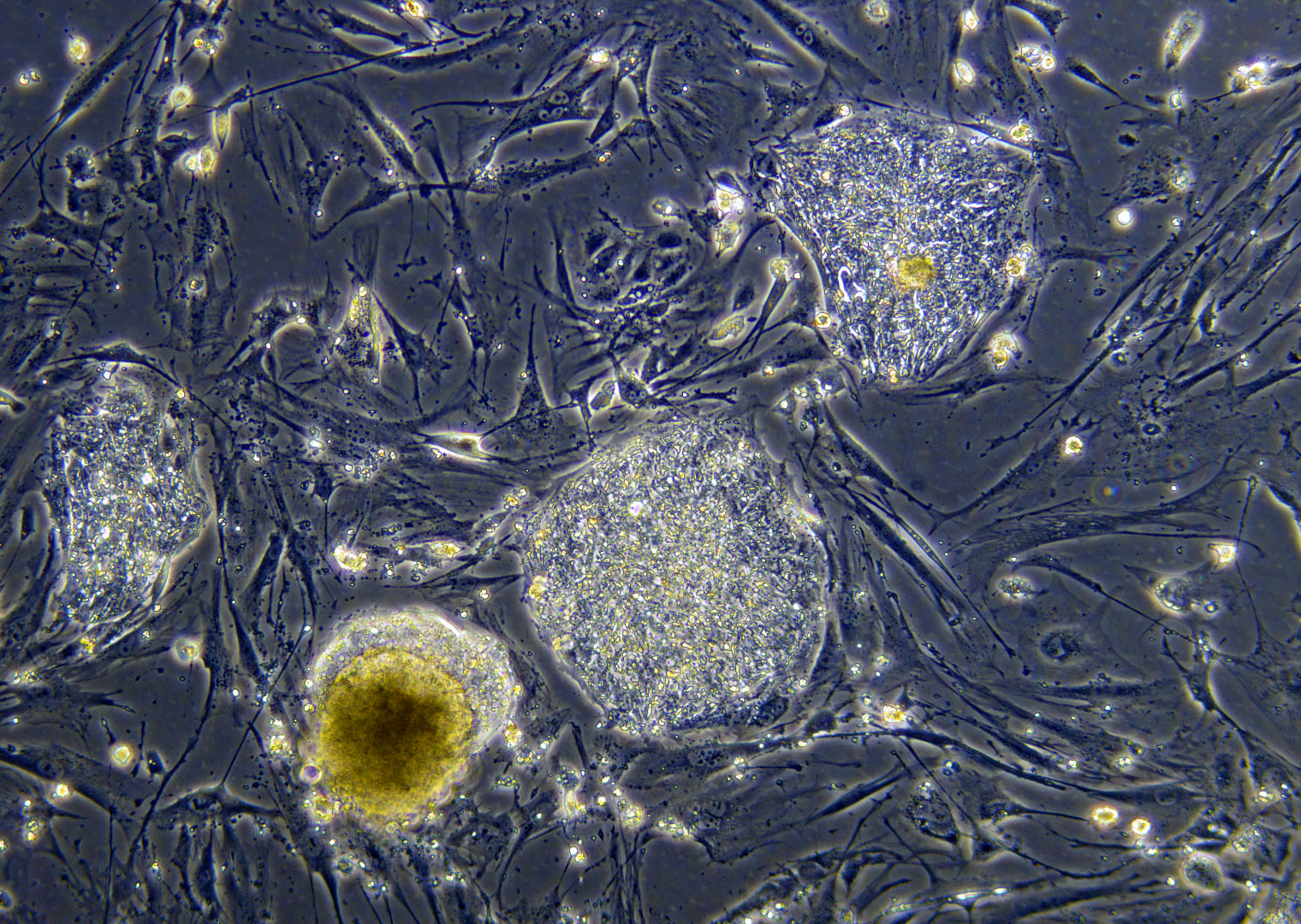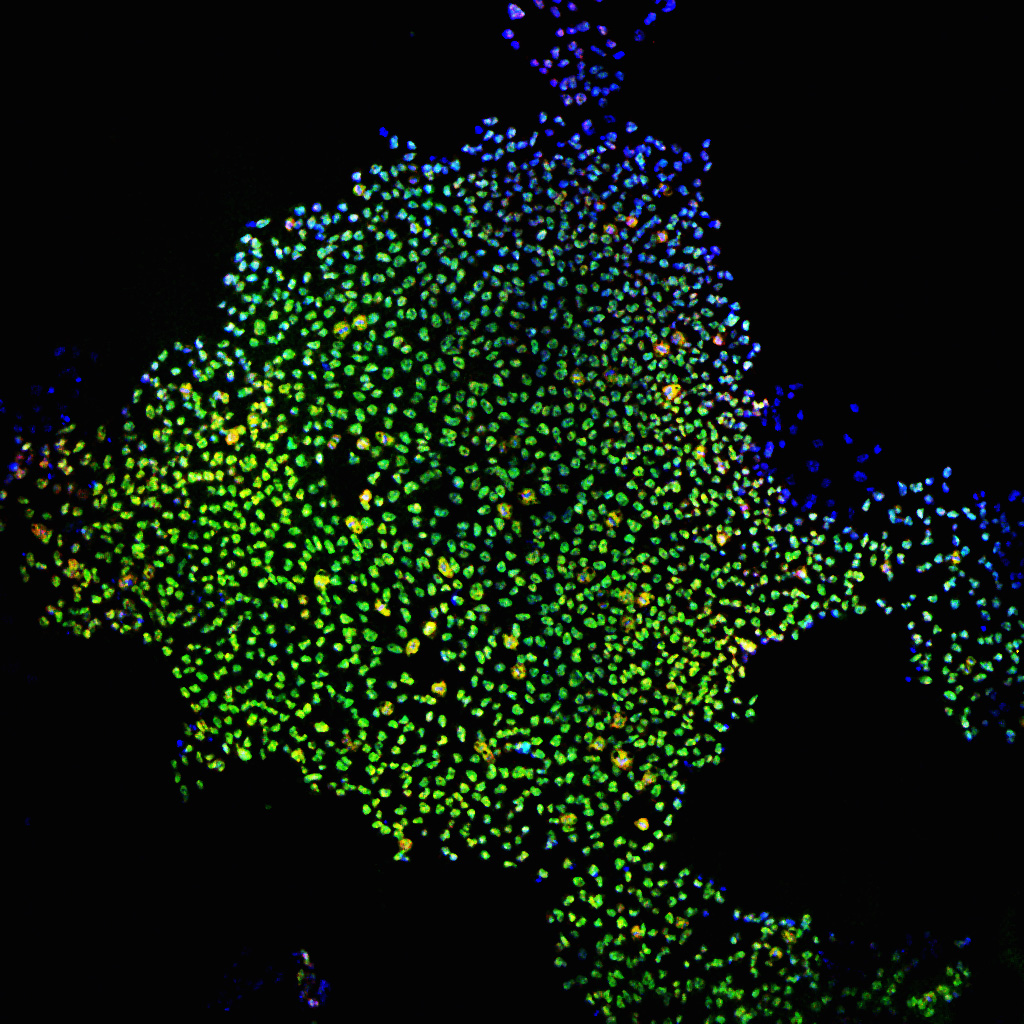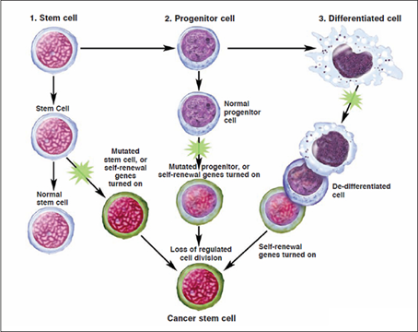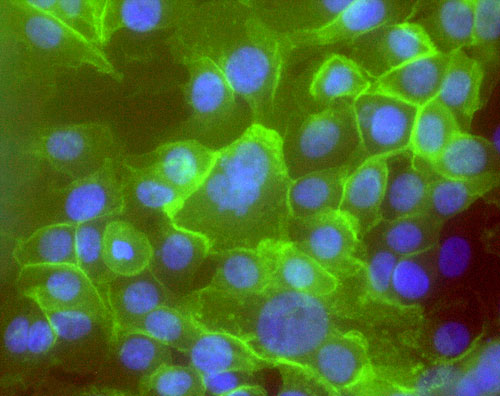Before learning about stem cell therapies and cures (or if you would just like to review the basics), let's begin by learning about the basics of stem cells.
What are stem cells? As you may know, our bodies consist of small organic entities known as cells. We have millions of them! There are many different types of cells, each having different shapes, sizes, and functions. One feature is common amongst all cells, however: all cells come from other cells which already existed. So you might ask: If all cells come from other cells, which cells do all cells come from in the beginning? The answer is stem cells. According to the National Institutes of Health "Resource for Stem Cell Research", stem cells are cells that have a remarkable potential to develop into many different types of cells in the body, during early life and growth. Stem cells were first specifically identified by Russian-American scientist Alexander Maximow in the early 1900s. (Citation 7) (Citation 2) In the following sections, you will learn more about what makes stem cells unique, how they function, different types of stem cells, and challenges in stem cell science. |
|
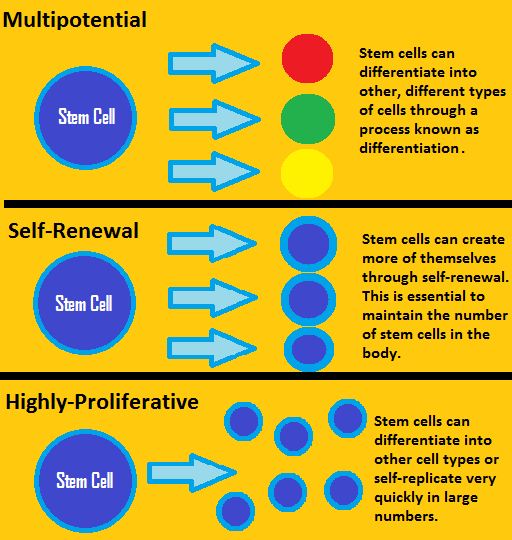 A diagram showing the some of the basic key characteristics of stem cells. Stem cells differ from normal cells in that they have multipotential (ability to turn into several different types of cells), have an ability of self-renewal, and are highly proliferative. (Image made by website author) | What makes stem cells unique? So, why are stem cells different from other cells? Why do scientists and clinical researchers use stem cells and not other cells? Well, stem cells have three key characteristics which make them very useful for medical research.
(Citation 7), (Citation 8) |
Types of Stem Cells
Generally, stem cells are categorized by the types of cells they can differentiate into.
- Totipotent: Totipotent stem cells have the ability to differentiate into any type of cell in an organism. For example, a zygote, created after fertilization with a sperm and egg, is a totipotent stem cell.
- Pluripotent: Pluripotent stem cells can differentiate into all cells of the three germ layers (ectoderm, mesoderm, endoderm). They can not turn into extra-embryonic cells (such as placental cells) however, and can thus not make a complete organism.
- Multipotent: Multipotent stem cells can differentiate into cell types that are similar to their own, but not other cell types. For example, hematopoietic stem cells can differentiate into different types of blood cells, but not bone or skin cells.
According to the International Society for Stem Cell Research, the following are some specific types of stem cells and their common appearances. All of these cells are currently being used in cutting-edge research for development of cures and treatments for various diseases.
Embryonic Stem Cells Embryonic stem cells are derived from early embryos called blastocysts (which are approximately 150 cells). First derived by researchers from the University of Cambridge in mice, embryonic stem cells are pluripotent cells, which means that they have the ability to differentiate into any cells of the three germ layers. Human embryonic stem cells (or hESCs) used for research in the United States are obtained from federally approved stem cell lines. Embryonic stem cells are grown in laboratories by the use of cell cultures. A feeder layer of mouse embryonic stem cells provides essential nutrients to these growing cells. When induced, embryonic stem cells can differentiate into more than 200 different types of cells, making them extremely versatile for research purposes! (Citation 9) (Citation 10) (Citation 11)
|
|
Adult Stem Cells Adult stem cells, also known as somatic stem cells, are undifferentiated cells found in matured tissues. While they can be used to develop cures and treatments, they cannot be used very extensively due to limitations in differentation potentials. Some of the several types of adult stem cells include:
(Citation 9) (Citation 10) (Citation 12) |
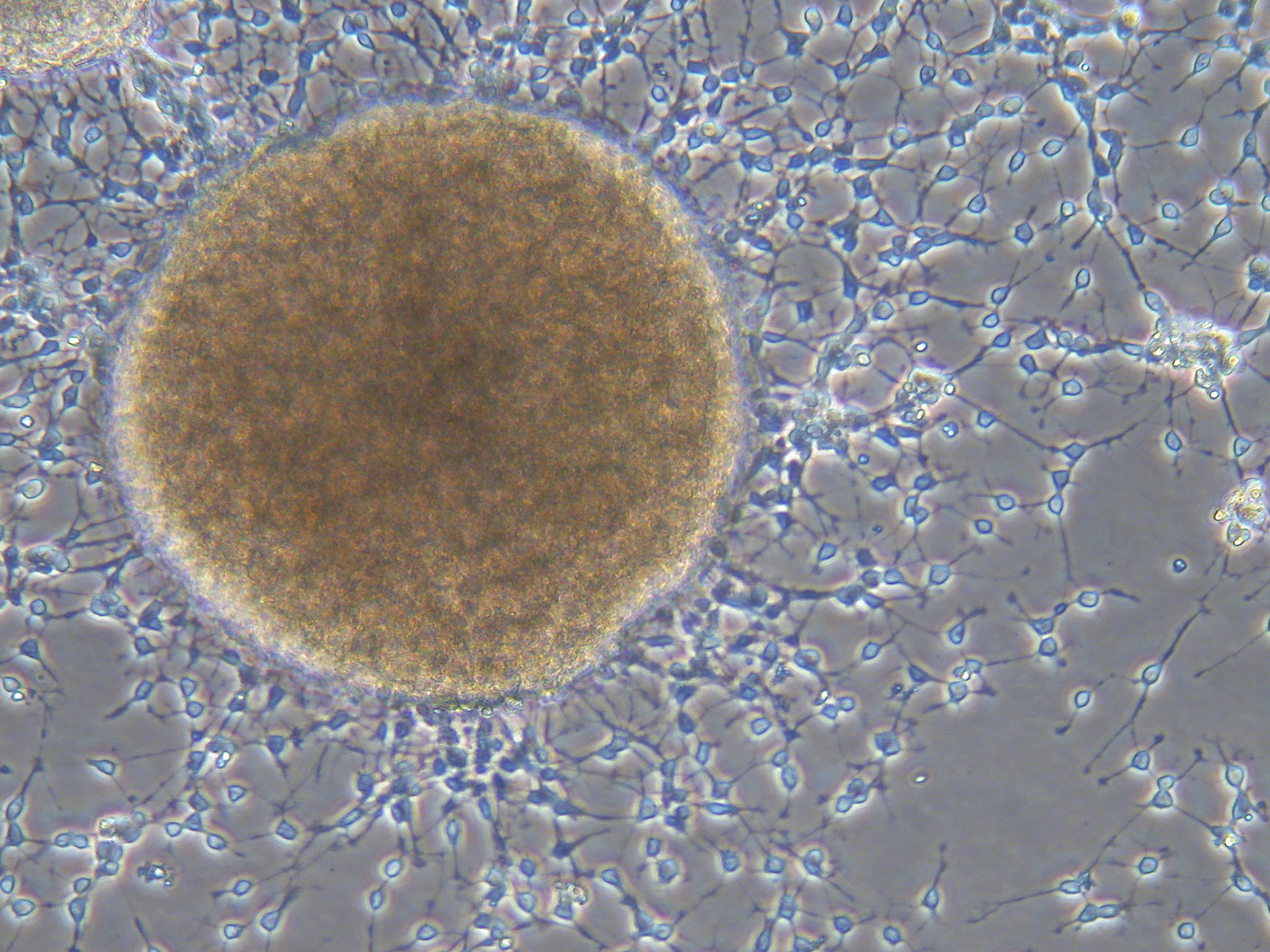 Stem cells already differentiated into neural cells. Some of these neural stem cells can be used as potential therapeutics for neurodegenerative diseases, such as Parkinson's Disease or Multiple Scleriosis. (Image Citation 14) |
Induced Pluripotent Stem Cells (iPSCs) Induced Pluripotent Stem Cells, or iPSCs, are one of the most innovative types of stem cells used in research. iPSCs were created in 2007 by two different groups (James Thompson at the University of Wisconsin-Madison and Shinya Yamanaka at Kyoto University in Japan) by reprogramming adult somatic cells into a pluripotent state, by the use of four different DNA-transcription factors. The DNA-transcription factors are called Oct3/4, Sox2, Klf4, and c-Myc respectively. All are highy expressed in embryonic stem cells. In an essence, adult stem cells are induced to behave like pluripotent stem cells (such as embryonic stem cells) when the four factors are integrated into the adult stem cell's genome! Researchers have since shown that iPSCs can be made from a variety of adult cells. iPSCs do currently have limitations for research use. The factors are inserted through the use of viruses (through a process known as transduction) which may be mutagenic and cause activation of unwanted genes. In addition, it is not known whether iPSCs have the exact same properties which embryonic stem cells have. However, iPSC research is rapidly leading to more conclusive data which supports the use of these innovative stem cells as therapeutic agents for combating disease. (Citation 9) (Citation 10) (Citation 13) |
|
Cancer Stem Cells Until recently, cancer stem cells (CSCs) were simply a hypothesis. However, now, scientists continue to confirm the existence of these cells in various tissues. CSCs are defined as stem cells which have experienced mutations, causing uncontrollable self-renewal or differentiation. Regulated cell division abilities are lost as the cell gives rise to tumors and mutated progenitor cells, which may, in turn, also cause cancer through tumor formation. While CSCs may seem to have little use for scientists at initial glance, many researchers have identified that CSCs are ideal for different types of targeted stem cell therapies. If scientists can identify CSCs for a particular cancer, they can be stopped with either intensive chemotherapy, irradiation, or novel drug delivery through the use of vectors, such as disabled viruses and extremely small nanoparticles. University of York researchers revealed that prostate cancer stem cells, for example, have unique gene expression signatures which can be used to identify them. Pancreatic cancer stem cells were also recently identified by researchers at the University of Michigan. MIT researchers recently created breast cancer stem cells in a Petri dish. Cancer treatments developed for CSCs can be much more far-lasting than traditional treatments which target tumors. This is because of the fact that treatments developed for CSCs seek to cure the root of cancer, rather than one of the "products" of CSCs (tumors). Biomedical researchers are currently working on altering CSCs with novel therapeutics to destroy any oncological potential they may have. (Citation 89) (Citation 90) (Citation 91) (Citation 92) |
|
See the video on the right made by the Ontario Science Center to review your knowledge of some key stem cell basics. |
Challenges in Stem Cell Science
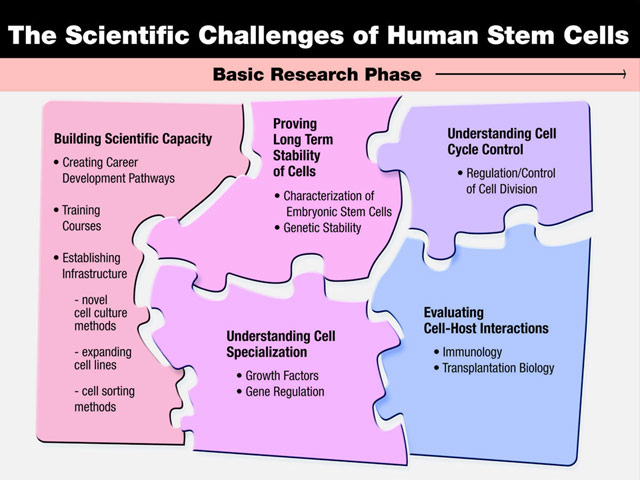 This visual from the NIH "Stem Cell Information" website shows some of the scientific challenges researchers face in human stem cell research. (Image Citation 62) | In the past years, while scientists have understood much about how stem cells work in the human body, a few scientific challenges remain that have yet to be solved. For example, it is not entirely known how exactly the cell cycle and differentiation is controlled in stem cells. What prevents them from dividing for longer-than normal periods of time and causing cancer? What factors coax stem cells into differentiating into a particular type of cell in a particular region of the human body? According to a ScienceDaily article, although iPSCs present a novel replacement for hESCs for use in research, scientists do not know whether the developmental potential in iPSCs is equivalent to that of hESCs. Finally, innovation in the entire stem cell field is still ongoing, with new career programs and infrastructure designed to support stem cell scientists. |
Home | Introduction | Applications | Innovators | Issues and Ethics | Resources | Get Involved | Citations
